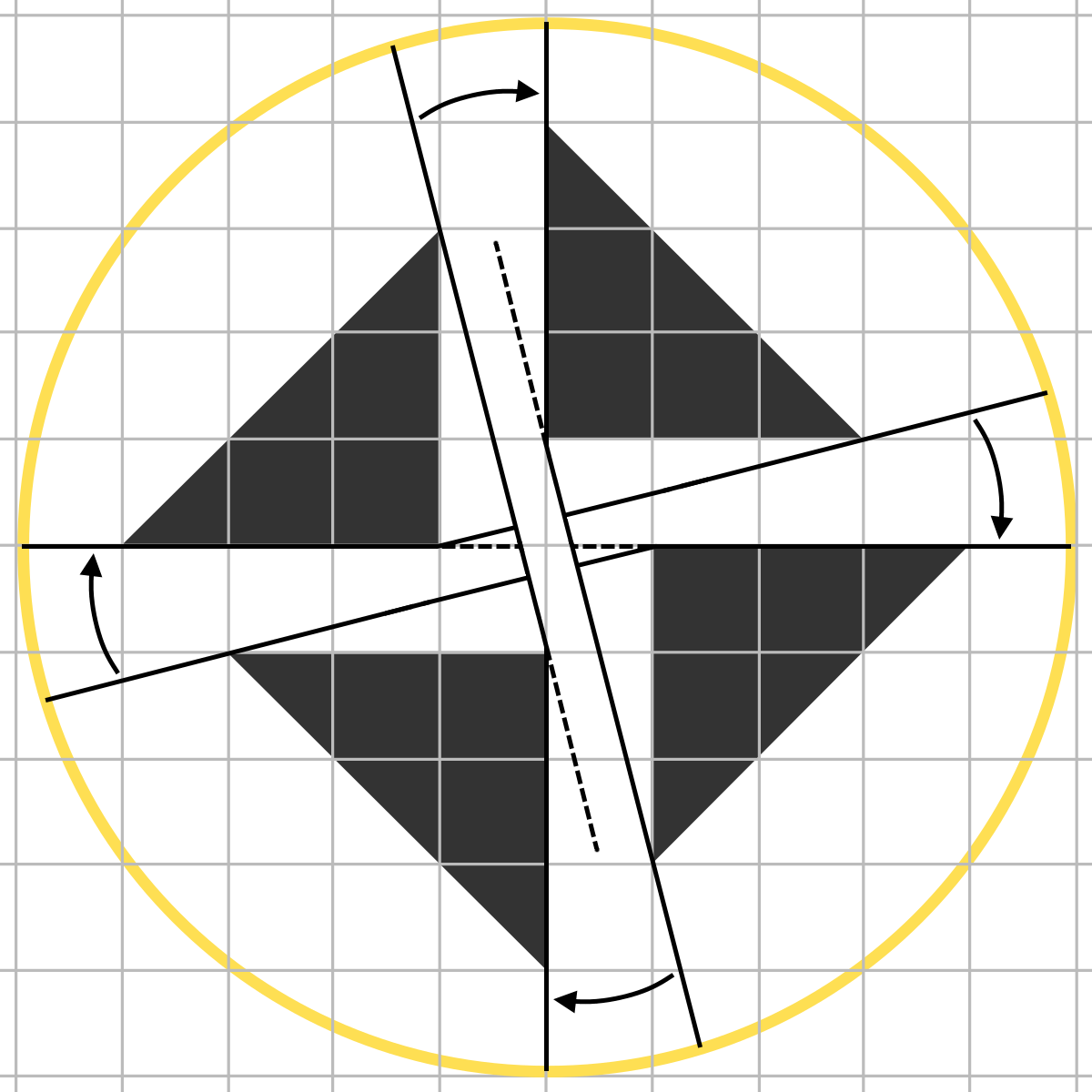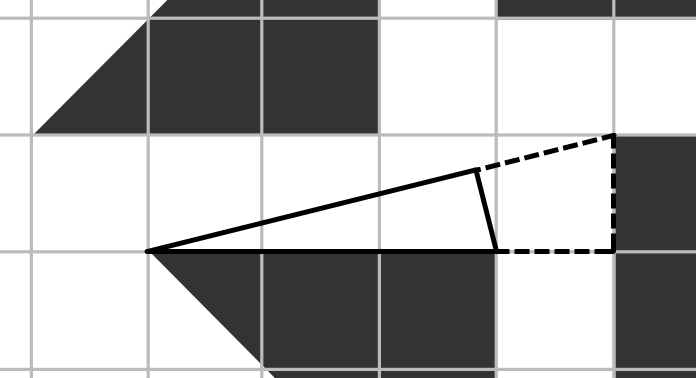In the dark part 2
Four isosceles right triangles with legs of length 3 are inside a circle of radius 5 and positioned on a unit grid.
Consider every possible chord of the circle that does not touch a triangle. Then shade every portion of the white inside the circle that is not touched by any of such chords.
The shaded area is b a , where a and b are coprime positive integers.
What is a + b ?
The answer is 89.
This section requires Javascript.
You are seeing this because something didn't load right. We suggest you, (a) try
refreshing the page, (b) enabling javascript if it is disabled on your browser and,
finally, (c)
loading the
non-javascript version of this page
. We're sorry about the hassle.
3 solutions
You should specify that the isosceles triangles aren't shaded.
Log in to reply
It would also be nice if the wording was clearer as to what one should be solving for, especially the "then shade every portion of the white..." part.
Could yoh please tell me why the triangles shaded in yellow should not be included?
Log in to reply
There are lines through the center of the circle that pass through the yellow.
little issue with your diagram, the point (12/17,3/17) should be (3/17,12/17) or (3,0) should be (0,3). The latter probably since you took y=3-4x
Log in to reply
Thanks for the correct. I make that mistake so often with points on the x or y-axis. I'll add a note.
Where can I learn more about this and what would it be called?

We are left with 4 triangles which we need to find the size of. We can do this by looking at similar triangles:

By comparing to the larger triangle, we can see that it has an edge ratio of 1 : 4 , and a hypotenuse of length 3 . By using Pythag, we can get the length of the smaller side l : l 2 + ( 4 l ) 2 l 2 + 1 6 l 2 1 7 l 2 l = 3 2 = 9 = 9 = 1 7 9 And now we can find the area: A A A = 2 l × 4 l = 2 l 2 = 2 × 1 7 9 = 1 7 1 8 And as there are 4 of these triangles, we can find the total area 4 × 1 7 1 8 = 1 7 7 2 giving us our final answer of 7 2 + 1 7 = 8 9 .
Anyone know how to make the images not ridiculously large?
Determine three lines in the positive quadrant: (1) line joining (0,1) and (1,-3), y=-4x+1,
(2) line joining (-1,0) and (3,1), y=(x+1)/4,
(3) line joining (0,1) and (3,1), y=1.
These three lines create one internal triangle surrounded by all three straight lines.
The three vertices of this triangle in the positive quadrant are determined by intersection of the above three lines as (0,1), (3,1) and (3/17,5/17). The area of this right triangle is = (18/17).
There is an identical triangle in all the four quadrants.
Total area =(4*18)/17 = 72/17,
Answer=72+17=89
What about the chords outside the triangles? ... Such as from 9 o’clock on the circle to 12 o’clock?
Log in to reply
Jeremey Galvagni's Diagram contains two types of triangles, blue and yellow. Blue triangle area is 18/17 and yellow triangle area is 9/10.
However, as explained by Binky Mh and Jeremey Galvagni in his comments, the yellow triangles are excluded, because, the chords passing through center are covering yellow triangles.
Therefore, only blue triangles with total area 4*(18/17) are not covered by chords.
The 4 congruent blue triangles are the only points that should be shaded. Thanks to @Henry U for pointing out the triangles such as the yellow one should not be shaded.
Now, let's take a closer look:
If we coordinatize as shown, the lines that form one triangle are bounded by the lines x = 0 , y = x / 4 , and y = 3 − 4 x and the vertices are shown.
The area of one triangle is then 2 1 ⋅ 3 ⋅ 1 7 1 2 = 1 7 1 8 . The total area is 4 ⋅ 1 7 1 8 = 1 7 7 2 and the answer is 7 2 + 1 7 = 8 9
Note: I accidentally mislabelled the point (0,3) as (3,0). It does not affect the result.